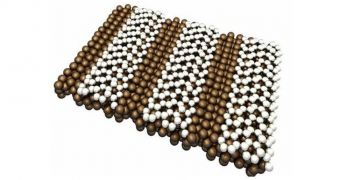Silicene is a combination of graphene and silicon that reportedly has a significant chance to reach the semiconductor market before the well-known graphene. Silicene is a single-atom thick layer of silicone interposed in a graphene base and this combination could beat graphene to the components market because the industry’s silicone tailored implementations.
Graphene has an amazing molecular structure. This is the most conductive material known to man and has surprising optic qualities.
R&D company IBM has shown that graphene could allow computers to operate close to the terahertz range (1THz = 1,000 GHz).
There is only one problem: graphene does not have a band gap. This is the difference in energy from an on state, where electrons are flowing through a circuit, and an off state, when the flow stops.
Having no band gap, it’s very difficult, next to impossible to build transistors. Any transistor must be able to switch “on” and “off” with precision and very high speed.
Researchers managed to isolate graphene with silicone and might be able to build switches in the silicone part. This way, the silicone combination might be implemented sooner than pure graphene based solutions.

 14 DAY TRIAL //
14 DAY TRIAL //